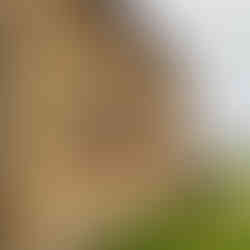I have always wanted to drive around Lake Superior. Other trips have taken me as far as Wawa, Ontario on the east side and Thunder Bay on the west, but I've been curious about what was in between on the north side. Unfortunately, I only had two days to get from Traverse City, MI to Grand Portage, MN, so this was more of a scout trip. I hope to spend more time on this route in the future. Here are some images and impressions.
I traveled Lake Superior counter-clockwise from Northern Lower Michigan, which means I drove by two other Great Lakes and an important river before getting to the big lake. The five-mile-long Mackinac Bridge spans the Straits of Mackinac, between Lake Michigan and Lake Huron. Mackinaw City is on the south side, St. Ignace is on the north side, Mackinac Island is off to the northeast. After driving through the Upper Peninsula, the next bridge connects Sault Ste. Marie, Michigan with Sault Ste. Marie, Ontario. The International Bridge takes you over the St. Mary's River and the Soo Locks. The locks were built so boats could get around the rapids in the St. Mary's River between Lake Huron and Lake Superior. After the border check, you work your way through Soo, Canada (my mother's birthplace), looking for Highway 17, the Trans-Canada Highway, which takes you around Lake Superior.
People along the way told me that car-moose accidents have been up this spring/summer because the bugs are so bad that the moose can't sleep. So they wander during the night, often ending up on the highway. I found this moose west of Marathon along the highway. At first I thought it was a yard ornament. Then it moved.
At this point I was kicking myself for not having more time to explore all the parks and scenic spots. The north side of Superior is lined with resorts and occasional old motels. I did get off the highway and drive around White River, Ontario, the place where the bear known as Winnie the Pooh was found.. It started as a railroad town and wasn't connected the by highway until 1961. There used to be a big paper mill in the town.
Stopped for the night in Terrace Bay, Ontario, just before the sun went down. Beautiful bay on Lake Superior. Another paper town. Series of terraces from the town and highway down to the lake, formed by the last ice age.
On the second day, I stopped in a few towns. The Nipigon River Bridge is an impressive site as you descend into the Nipigon River Valley on the Trans Canada Highway. The structure did not have an auspicious beginning. Months after the first span was completed, a winter storm closed it down in 2016, forcing Canadian traffic between the west and east to divert through the United States. Both spans were finally completed and open for use last year. Schreiber is another railroad town, at the northwest point of Lake Superior. The town has a railroad museum and a monument to those from the area who gave their lives in World War I.
One of the highlights of the trip was Sleeping Giant Provincial Park, located on the Sibley Peninsula, east of Thunder Bay. The park got its name from how the topography looks from Thunder Bay or from a boat on Lake Superior. The first images are from the Thunder Bay Lookout in the park, which you can only access from a bumpy ride on a dirt and rock road to the west side of the peninsula. They built a viewing platform that takes you out over the bluff where you can look down between your shoes and see the trees and water below. The city of Thunder Bay is visible across the bay. Another popular spot is the Sea Lion rock sculpture in Perry Bay. The diabase dyke used to have a head that looked like a lion, but that part of the formation disappeared more than a hundred years ago. At the southern tip of the peninsula is the small community of Silver Islet, homes left over from a silver mine in the 1800s.
I just took a few random pictures on my quick drive through Thunder Bay, Ontario. The community started as a fur trading outpost and is called the Canadian Lakehead, since it's the western terminus for Great Lakes navigation in Canada.
Final stop on the first part of my Lake Superior circle tour was just across the Canadian border in Grand Portage, Minnesota. The area is part of the Ojibwe Indian Reservation. The Grand Portage National Monument is a recreation of Great Britain's North West Trading Company, which became a key part of the fur trade. Voyageurs would paddle their canoes from Montreal to Grand Portage and trade good with the Native Americans and other trappers who made their way by boat from the lakes and rivers to th west and north. "Grand Portage" refers to an 8.5 mile trek from Lake Superior that the voyageurs would have to make on foot to avoid the rapids and waterfalls on the lower Pigeon River.


















































































Comments